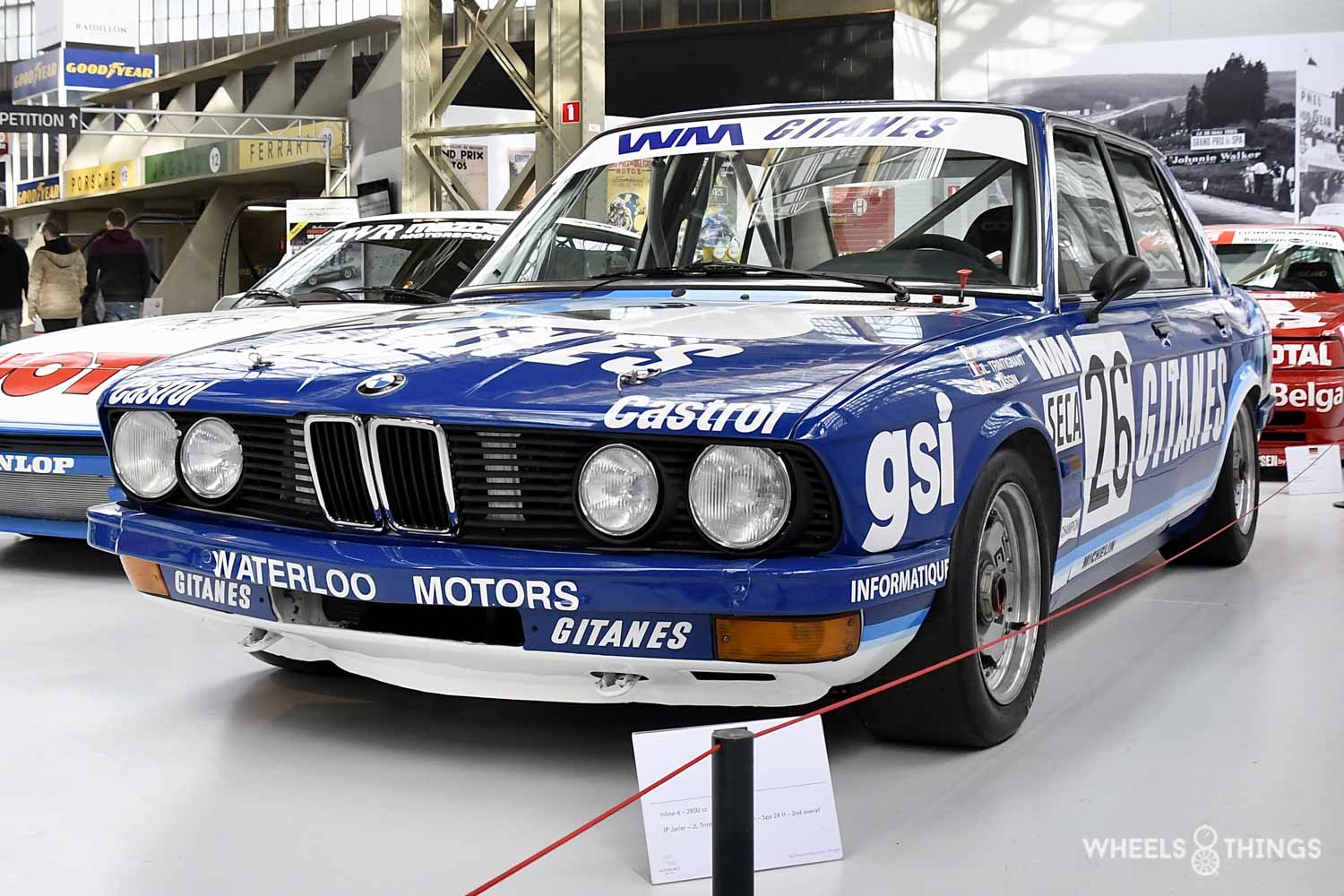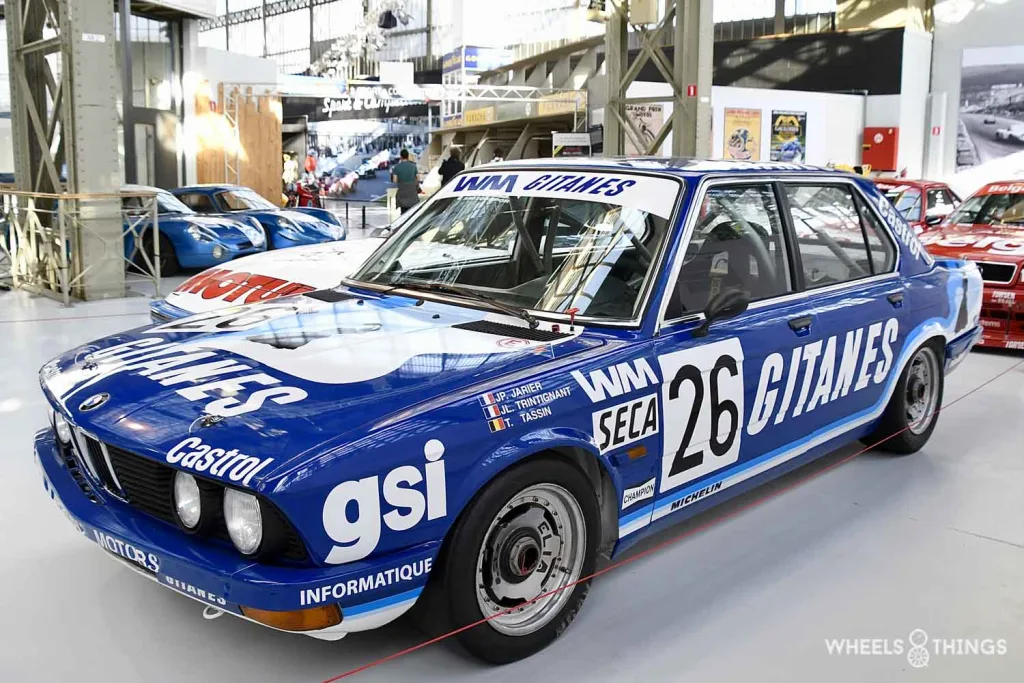
Recently, with the G60, BMW presented the eighth version of its 5 series . The very first, with internal code E12, saw the light of day in 1972 and had a two-litre 4 cylinder engine ( 520 and 520i ) under the bonnet.
A 6-cylinder version appeared a year later with the 525. The first 5 series was also the start of a new type designation at BMW where the first digit stood for the model and the next two for the engine version. And back then, the engine capacity still matched what was written on it. Today, things are a bit different.
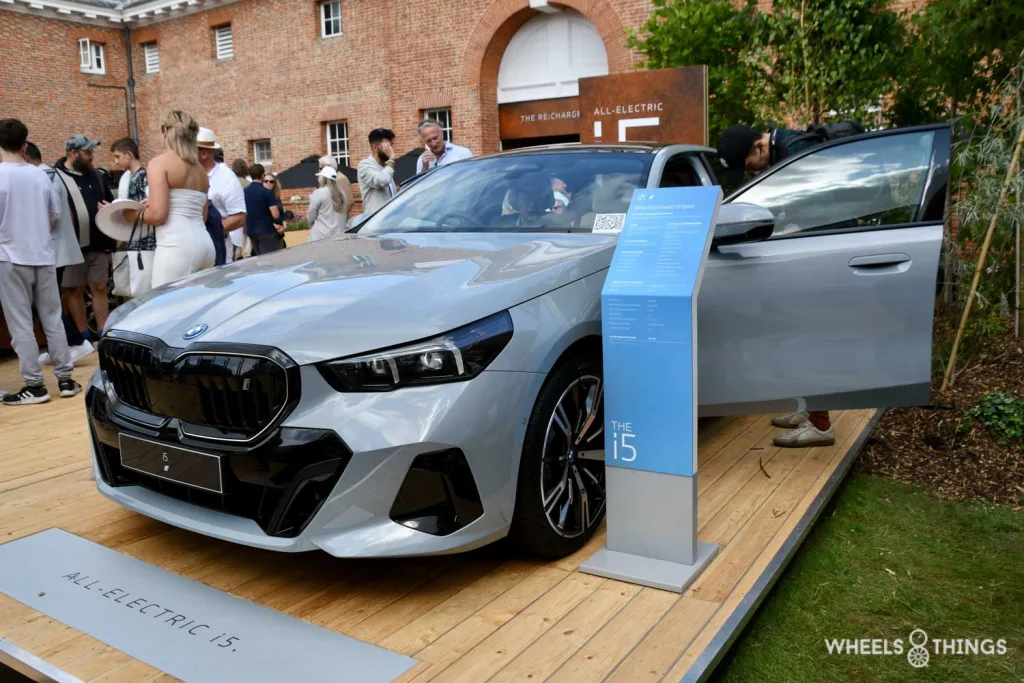
Over the years, new models followed and engine variants also expanded. We saw fairly heavy 6 cylinder engines up to 3.5 litres, a V8 version up to 5 litres and even BMW had to give in to the rise of the diesel engine with their very first 524td in 1983. The M division added to this by cramming their 6-cylinder racing engine into the second model of the 5. A legend was born and the M5 became the benchmark in terms of very sporty 4-door sedans. Later, an M of the V8 and even, a Formula 1 engine-derived, V10 version followed. Meanwhile, these have all become true classics.
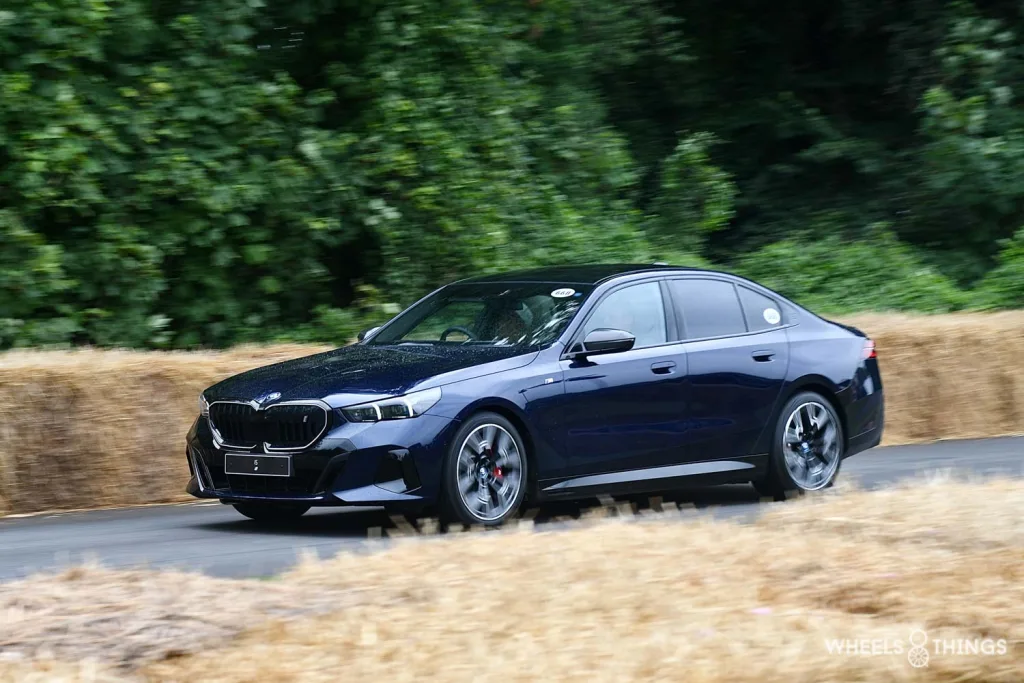
With the new 5 series, only the M5 will still get an 8-cylinder engine ( though with hybrid system ). The regular versions have meanwhile been downsized to a 4 cylinder engine. Basically as it once started in 1972. An all-electric version, with the i5, is also available for those possibly interested.
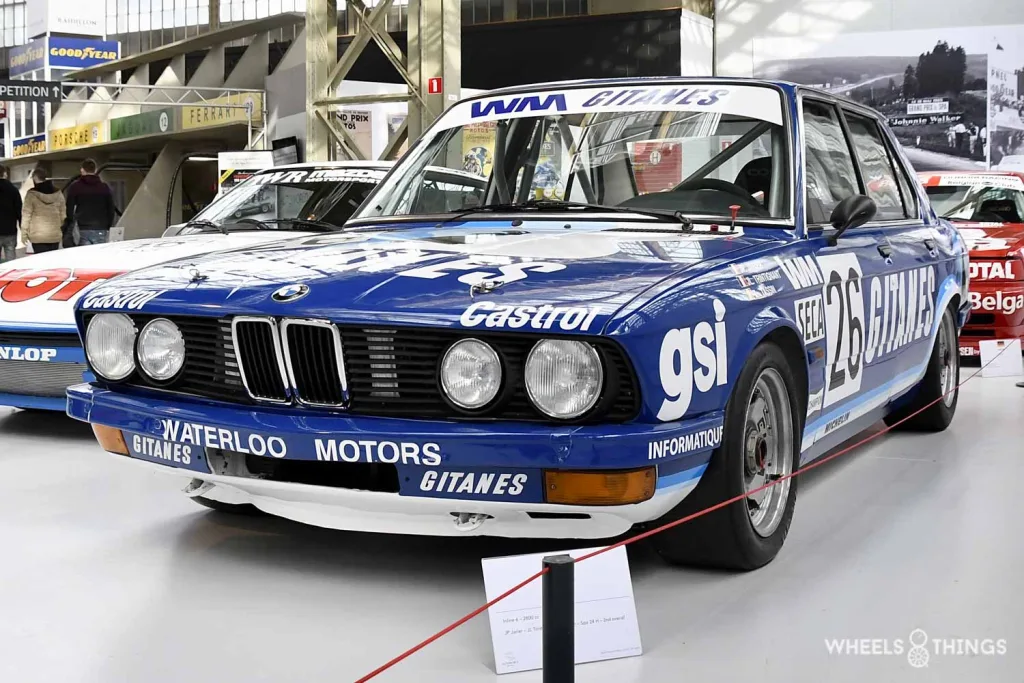
There is a story or history attached to many cars. A great victory or a heroic performance always qualify for this. But it can also be something else, as in the case of this 1982 BMW 528i WM Gitanes. We saw it during the now two-year-old “100 years of the Francorchamps circuit” expo at the Autoworld museum in Brussels.
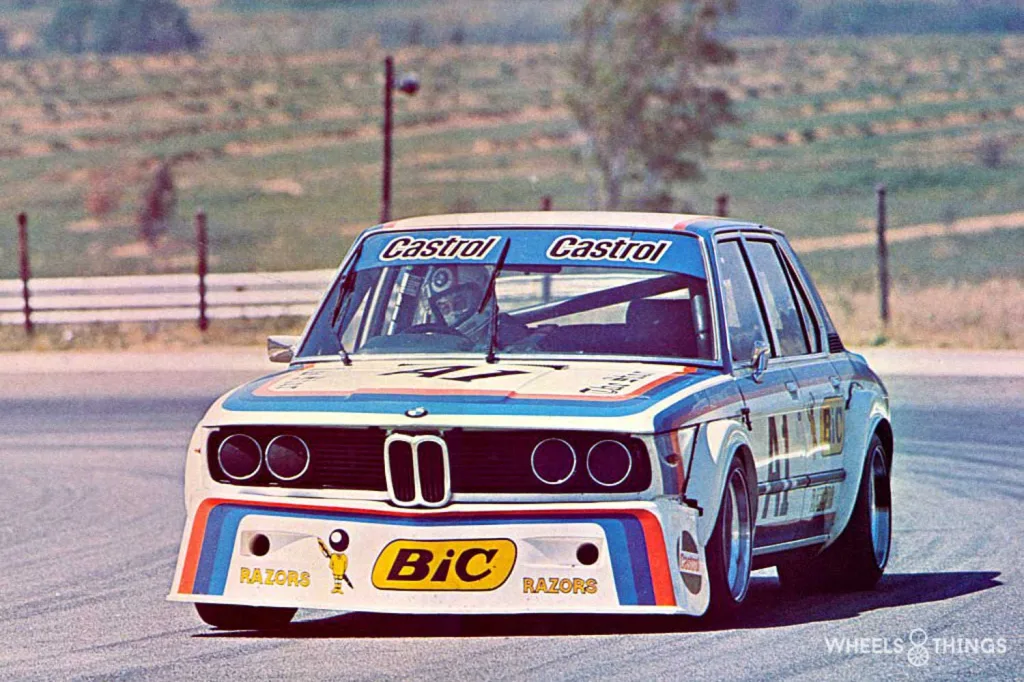
A BMW 5 series in racing glory? Surely not directly a model to turn into a racing car? Still, in the early days of the model, there were three model series used on the race track. The very first 5 series ( internal code E12 ) in South Africa and in Europe and the second ( internal code E28 ) also in Europe. In the USA, an M5 ( internal code E34 ) raced in the Bridgestone Supercar Championship in the early 1990s. Today, of course, it is unthinkable for a family, rather large, heavy and luxurious saloon car, to qualify for this.
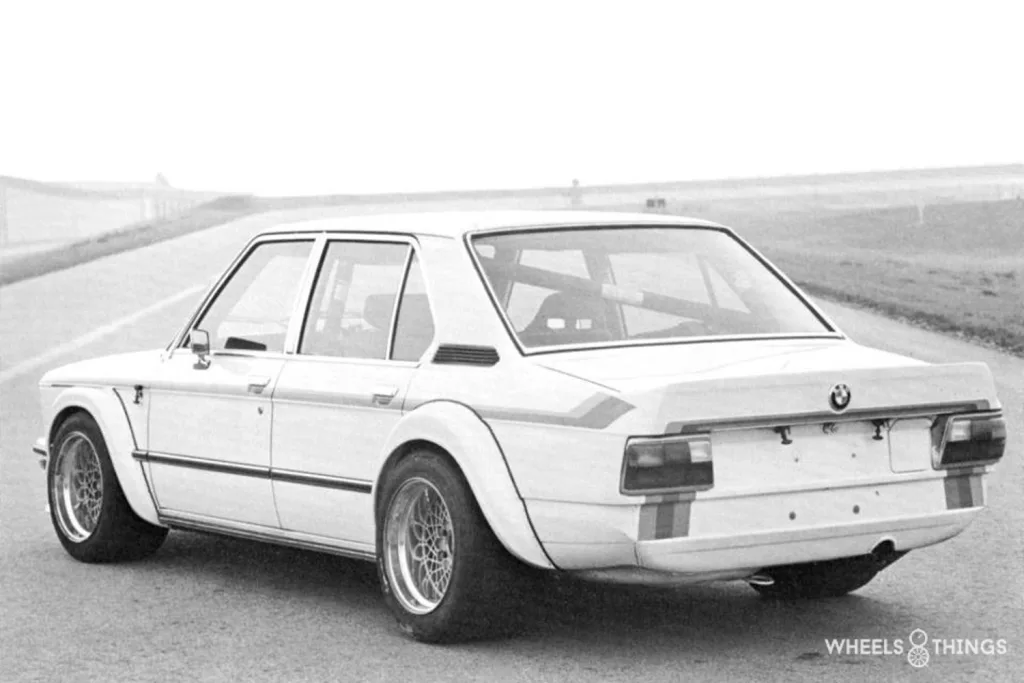
For the very first 5 series in course version, we actually have to go to South Africa. The local BMW importer needed a car to participate in the 1976 touring car championship. The regulations allowed some freedom for the participants so there were some pretty impressive cars on the starting grid. BMW South Africa, however, did not immediately have a suitable car. The Munich headquarters were contacted and Jochen Neerpasch, who was BMW Motorsport boss at the time, was willing to cooperate. As a basis, they chose a BMW 5 series fitted with a modified 3-litre engine. Two examples, fitted with a modified bodywork and suspension, were built.
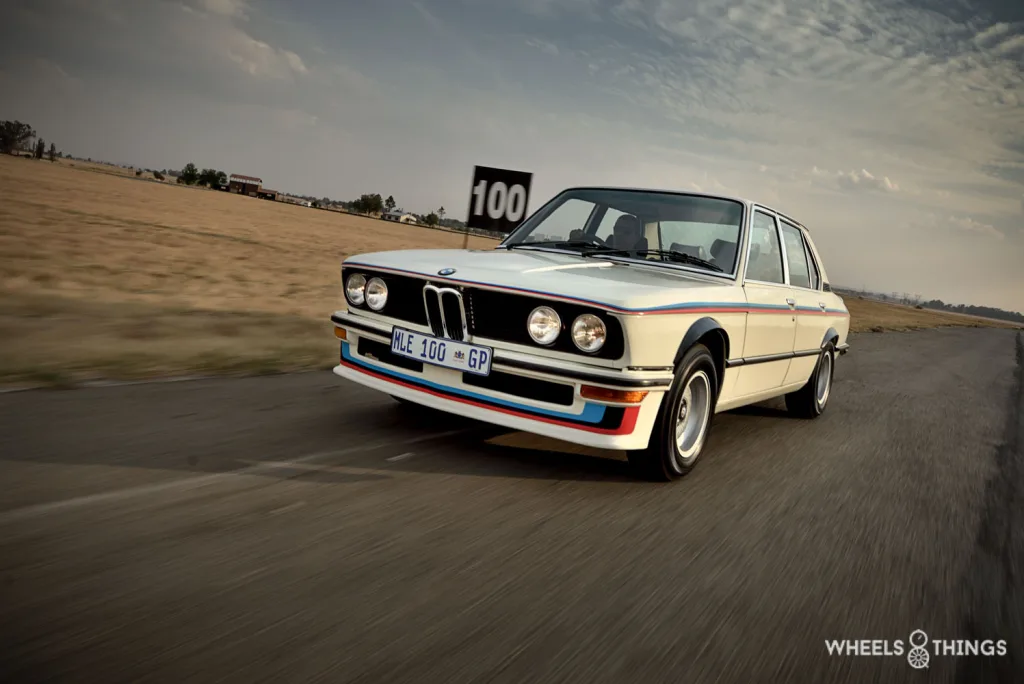
At least 100 examples for public roads also had to be made to participate. This was done at the BMW factory in Rosslyn, Pretoria. At the time, this was the only foreign BMW factory assembling cars for the African market. This street version was also a “specialleke”: hand built with a lightened bodywork, modified suspension, sports gearbox, wing extensions, sports seats, BBS rims and the third BMW to come with the iconic M stripes. Its name: 530MLE and that stood for Motorsport Limited Edition.
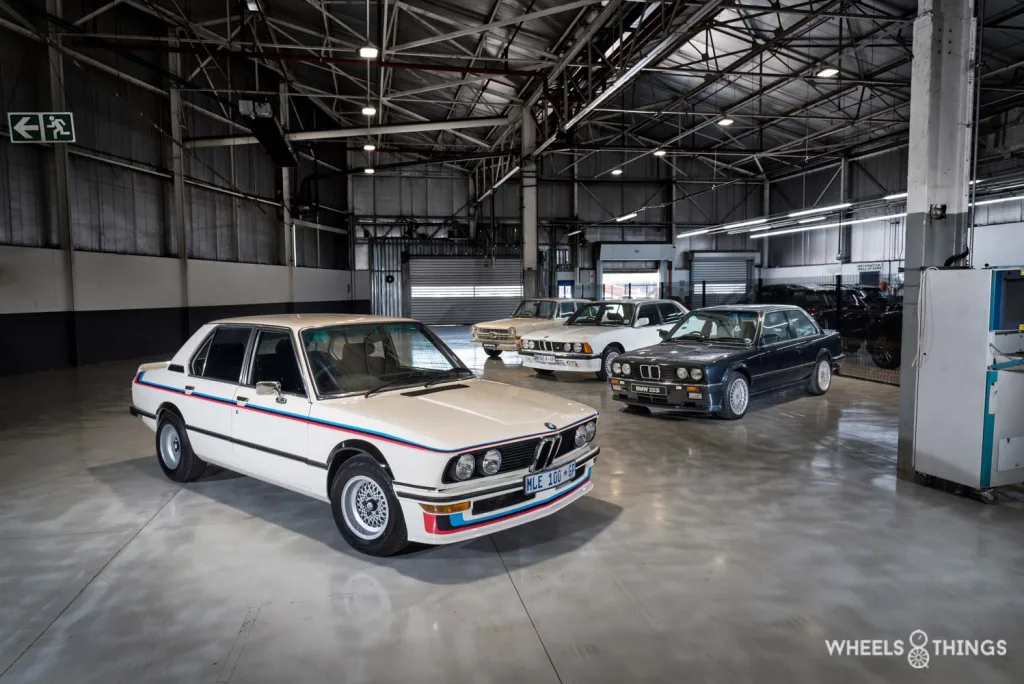
Of the just over 100 built, only a limited number are still driving around today. Perhaps one of the most unique BMWs on our globe and built two years before the BMW M1, which is still regarded by many as the very first M BMW. And the 530MLE is a success: in 1976, all 15 championship races are won by one of the two examples. The car is so good that it will be used in the championship for almost 10 years.
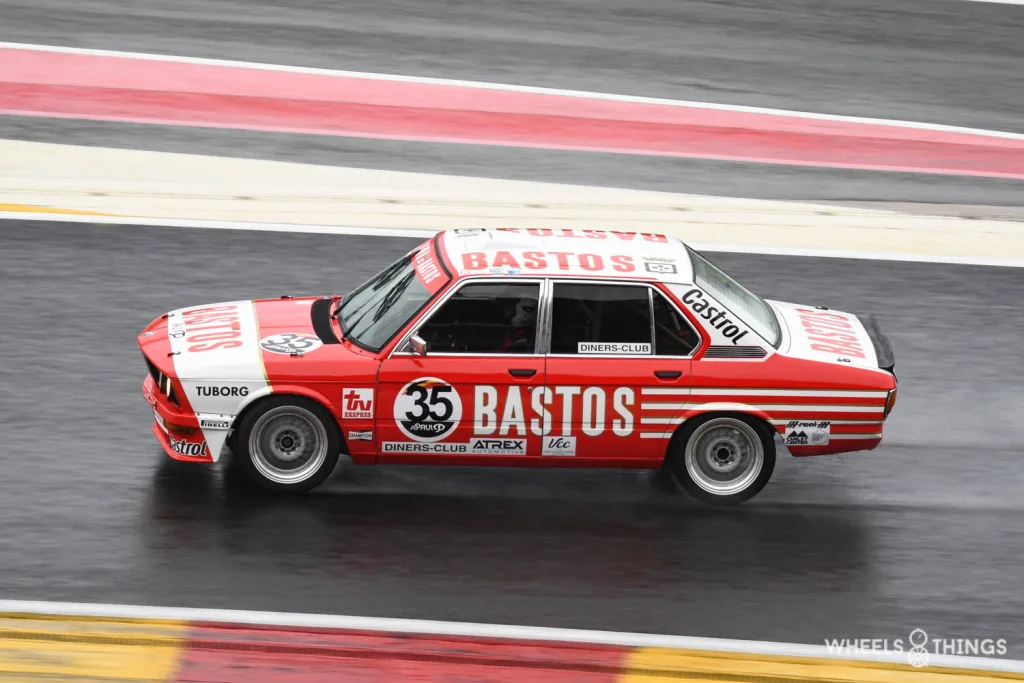
Here in Europe, the 5 series has been used in the national championships for production cars since 1977. This is more of a modified base version with far fewer modifications than its South African brother. Only disadvantage of the car, compared to e.g. the Ford Capri, is its basic weight. A few hundred kilos more to lug around, you feel that immediately. The 530i appears on circuits in France, England, the Netherlands and Belgium. On debut, the Belgian Juma team wins the 24 Hours of Francorchamps and in France Jean Pierre Beltoise wins the title. This group one 530i will continue to be used by private teams until 1981.
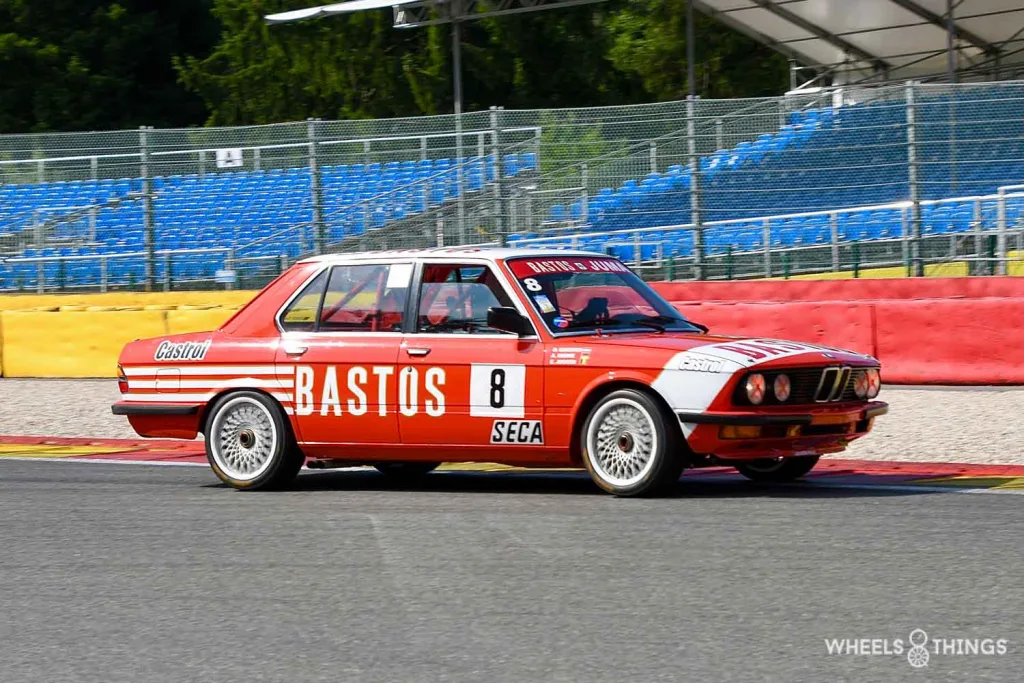
The second model of the 5 series came on the market in late 1981. This E28 has the 528i as its top model. From 1982, all group 1,2,3,4,5 and 6 classes will be replaced by group A,B and C by the FIA. For the touring car series, this means that group 1 and 2 will disappear and become group A. This new formula provides a basic bodywork that may not be altered with spoilers or wide wheel arches but does allow for a real course suspension and a modified braking system. With this, the days of wobbly cars are over. At BMW Motorsport, they understood the system of a customer service for racing equipment very quickly. From the very beginning, they sold parts or kits for racing cars. With this E28, they go one step further and offer private teams a ready-made racing car. Sign order form, pay deposit and invoice, collect car and go straight to the track for the necessary test work. There is also an after-sales service with assistance and quick delivery of spare or replacement parts.
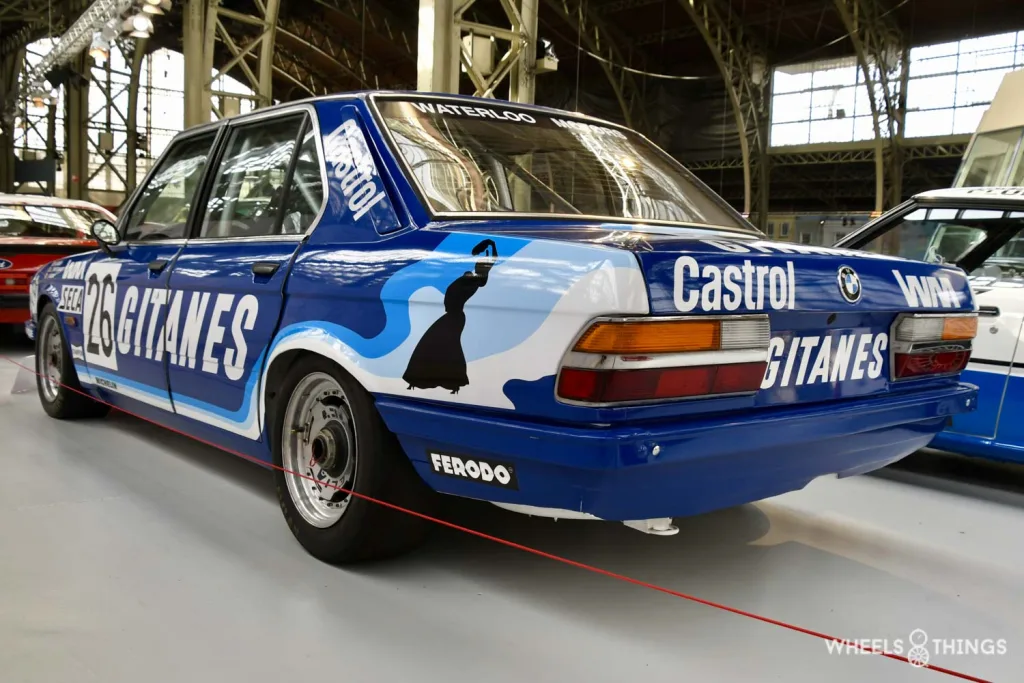
BMW Motorsport is building 11 examples of their new Group A car. Three go to outgoing defending champion Eggenberger. Belgium has the most customers as five units come to our little country. In 1982 there are still substantial budgets available from tobacco manufacturers and they see an opportunity in the new touring car championship. The Antwerp Juma/Joosen team, with the support of Bastos, orders two units. The same number for BMW dealer Waterloo Motors, which, with the support of Gitanes, also buys two. Michel Delcourt, also buys one with pennies from Lucky Strike. Furthermore, two more are for customers in France. BMW itself also keeps one demo model.
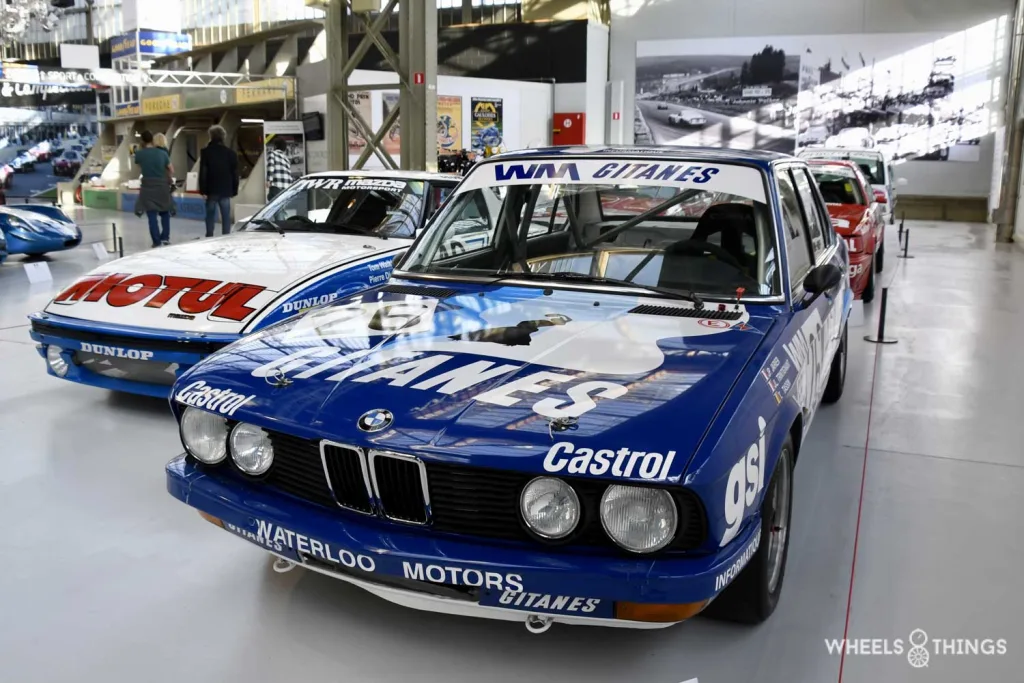
The 1982 European touring car championship was a battle between Eggenberger’s BMWs and Tom Walkinshaw’s TWR team. The latter ditched his Mazda RX7 – LINK – and replaced it with a hefty Jaguar XJ-S with a 5.3-litre V12 engine. Walkinshaw started building and developing the XJ-S on his own and without Jaguar support and he will soon make it a winner. The Belgian Juma team only runs a limited European programme and WM’s main goal is the 24 hours of Francorchamps and does some sprint races in Belgium in preparation for the 24-hour race.
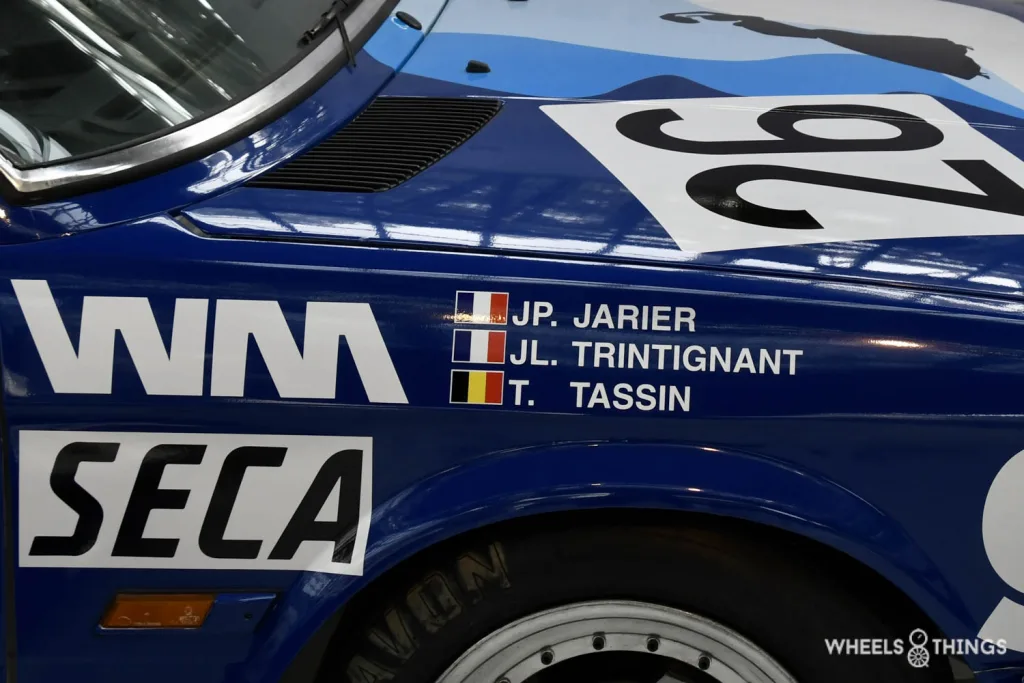
WM and sponsor Gitanes provide top crews on both cars. On start number 26, we actually find Formula 1 pilot Jean Pierre Jarier. He forms a team with young Belgian talent Thierry Tassin and French actor, and also very good pilot, Jean Louis Trintignant. At the wheel of the second, with start number 27, we find touring car specialists Alain Peltier, Hervé Regout and Alain Cudini. The latter had also taken care of all the preparatory tuning work. The cars were partly prepared in Belgium with support from French preparer Danielsson. As an extra promo stunt, an RTBF camera will be mounted in car 26. This will provide “live” images (a real stunt in 1982 Belgium) from the car for live TV broadcasts.
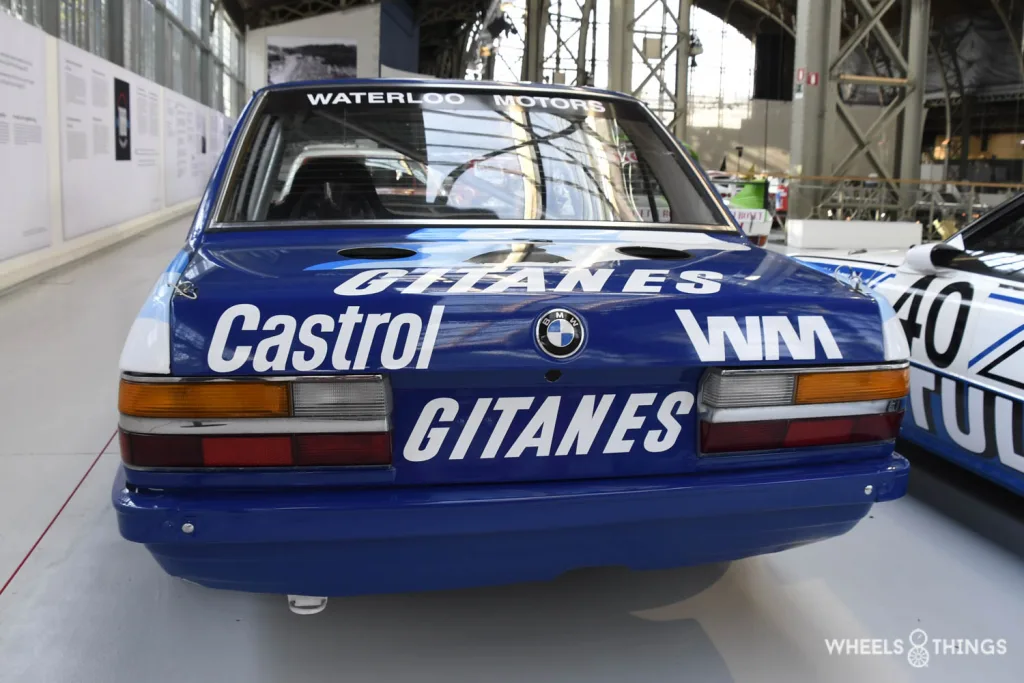
The battle for victory promises to be beautiful with competition from two Jaguars, two Juma and three Eggenbergers at BMW, 4 Chevrolet Camaro’s, a Mercedes 450SLC and a few more BMWs from smaller teams. On the entry list familiar names such as: Walkinshaw, Nicolson, Percy, Dieudonne, Lovett and Allam at Jaguar. Juma BMW did not underperform with Joosen, Heyer, Hahne, Quester and rally talent Sneyers. On the Eggenberger BMW we find outgoing champions Kelleners and Grano. The blue Gitanes BMWs run directly in the top three of the standings during qualifying. On day 1, it is only Walkinshaw’s Jaguar that is a fraction faster. The next day, the XJS drives even two seconds faster around Francorchamps. Joosen’s Bastos BMW settles in between the Jag and Jarier’s WM BMW. A great race announces itself.
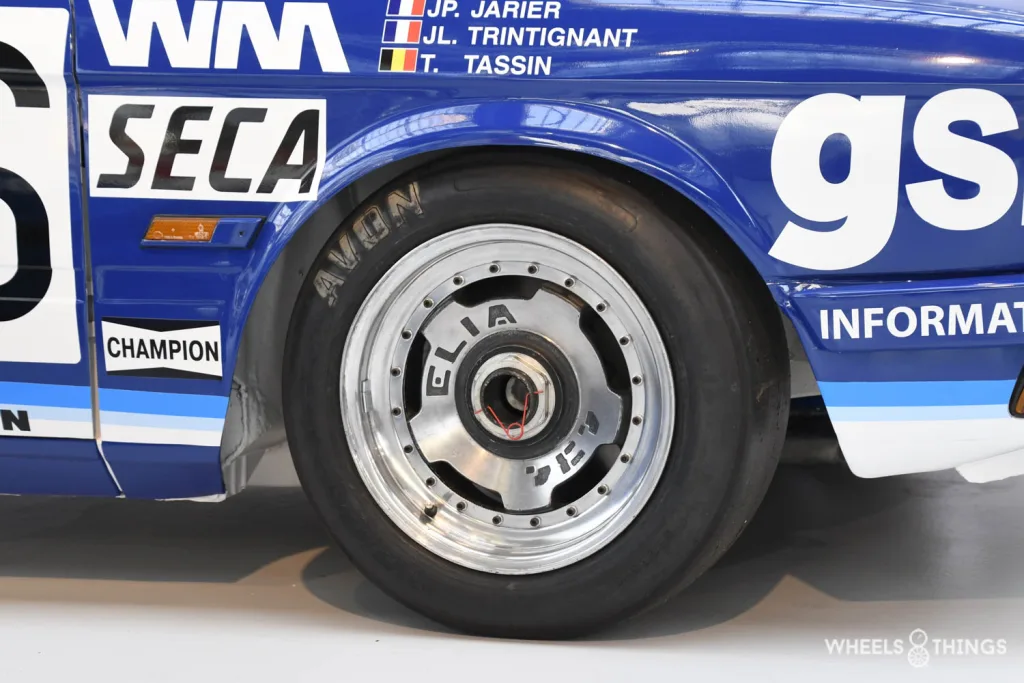
The start, as is often the case at Spa, is in the rain. Walkinshaw is best off and rushes first up the Raidillon. The Jaguar struggles in the rain and has to pass the BMWs on the very first lap. The Bastos BMWs lead ahead of this one from Gitanes. Turmoil on lap three: the Gitanes BMW of Cudini loses a wheel and has to complete almost one lap on the remaining three others. After reaching the box, part of the suspension has to be replaced. No 27 BMW will only restart one hour later. All hopes of a good result are immediately gone. But there are also blows in the Bastos Juma camp: the top car of Joosen-Heyer-Sneyers is left with a faulty ignition. Getting to the box is out of the question and the 528i is left behind along the track. Joosen and Heyer move on to the team’s second car. BMW top driver Dieter Quester, who was hired for this race, is already thanked and can return home. A bit strange though: hiring an expensive top pilot and then not using it.

Rain continued for the first three hours of the race and the remaining BMWs continued to lead the command. Meanwhile, the Jaguars have already dropped far down the standings. Their Dunlop rain tyres are proving no match for the Michelin ones fitted to the BMWs. After three hours of racing, the Bastos Juma BMW of Joosen/Heyer and Hahne is in the lead ahead of its Gitanes colleague of Jarier/Tassin and Trintignant. The latter stands his ground among all the top pilots, posting nice lap times in the rain. Following in third place is an “old” Ford Capri of Semoulin/Vermeersch/De Dryver which has made a nice remount due to the dropouts and weather conditions. After four hours of racing, the rain stops but fog appears. The Jaguars find their speed on the dry road surface and climb up the rankings. Unfortunately, they will both have to abandon the battle due to accidents.
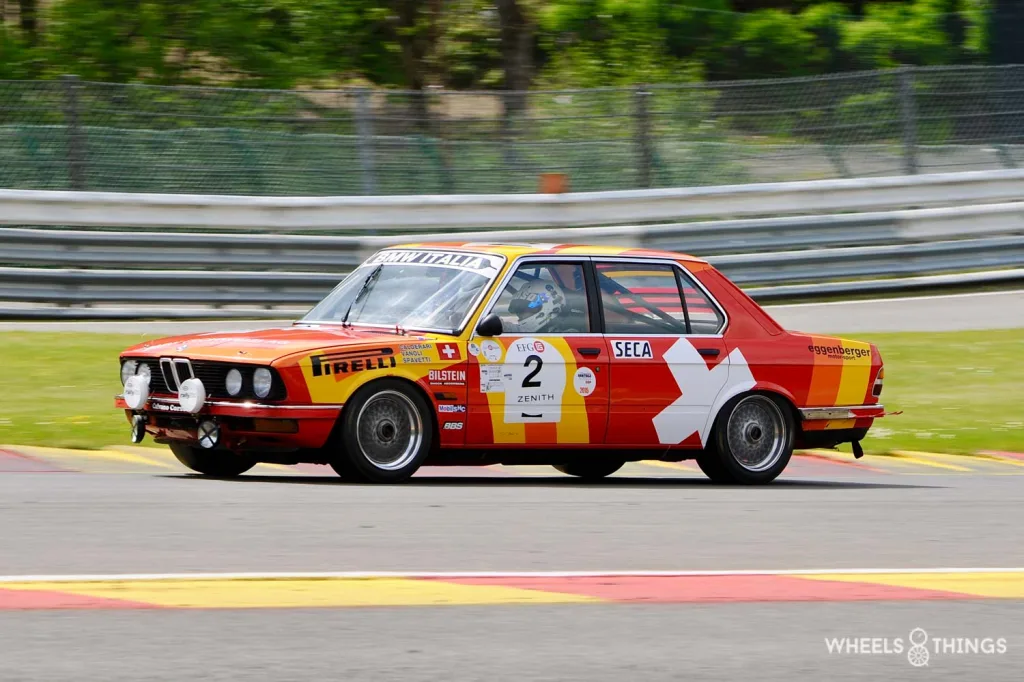
Also at Eggenberger BMW, they lose the 528i of Calderari/Spavetti and Vanoli going off the track and into the crash barrier.
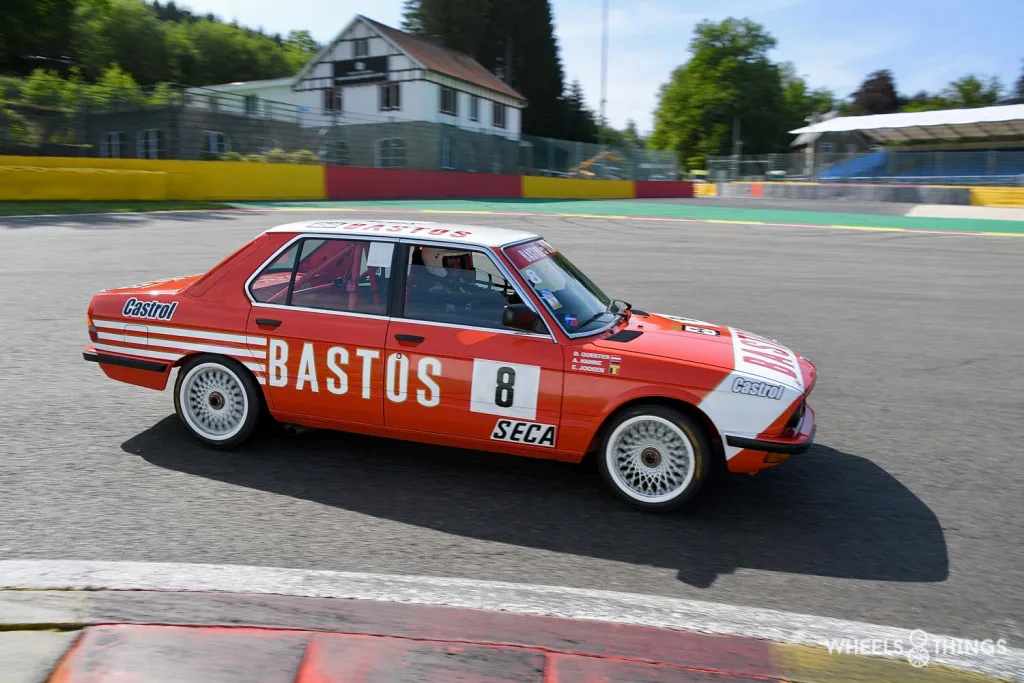
Up front, the Bastos Juma BMW continues to turn its laps without too many problems. In addition, the Juma team provides perfect pit stops so little time is lost during driver changes and refuelling. Semoulin’s Ford Capri moves up to second place but has to throw in the towel with a blown engine halfway through the race. The Eggenberger BMW of Kelleners and Grano also moves back into the top three after a cautious start.
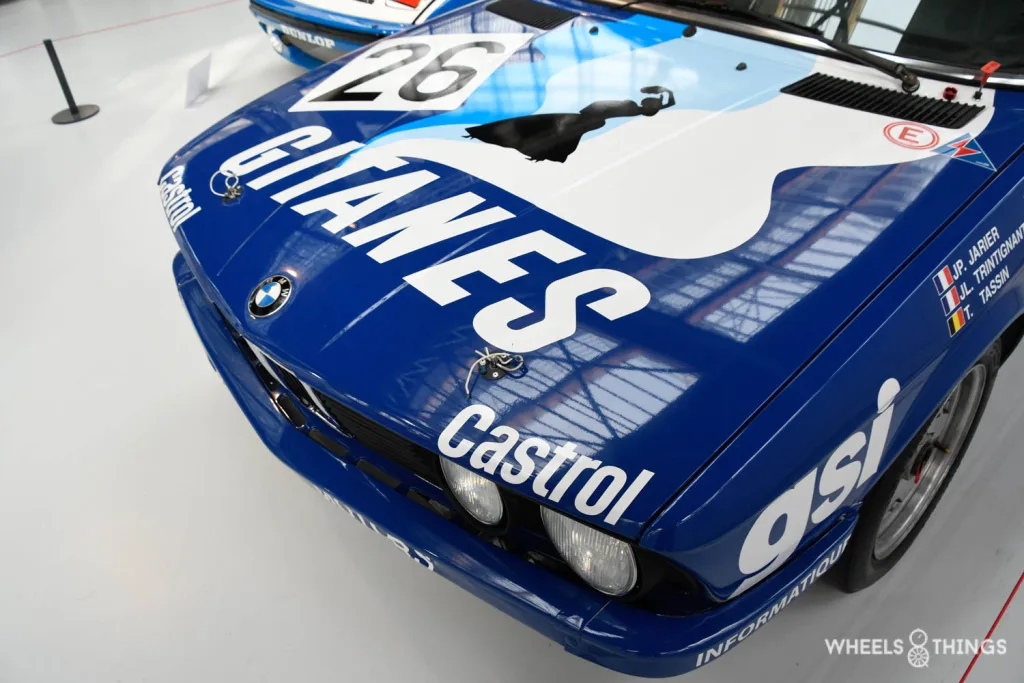
On our Gitanes BMW, electrical problems crop up during the night. After several visits to the box, the 26 drops back to fourth place. The engine holds back regularly and the mechanics cannot pinpoint the problem. At dawn, the leading Juma BMW unexpectedly stops at the box. The front left wheel bearing needs to be replaced. His five-lap lead drops to just over a lap over No 26 WM BMW. On this, the electronic problems are still unresolved. The engine is still faltering and the drivers cannot use the maximum power and lose a place to the Eggenberger BMW of Kelleners and Grano.
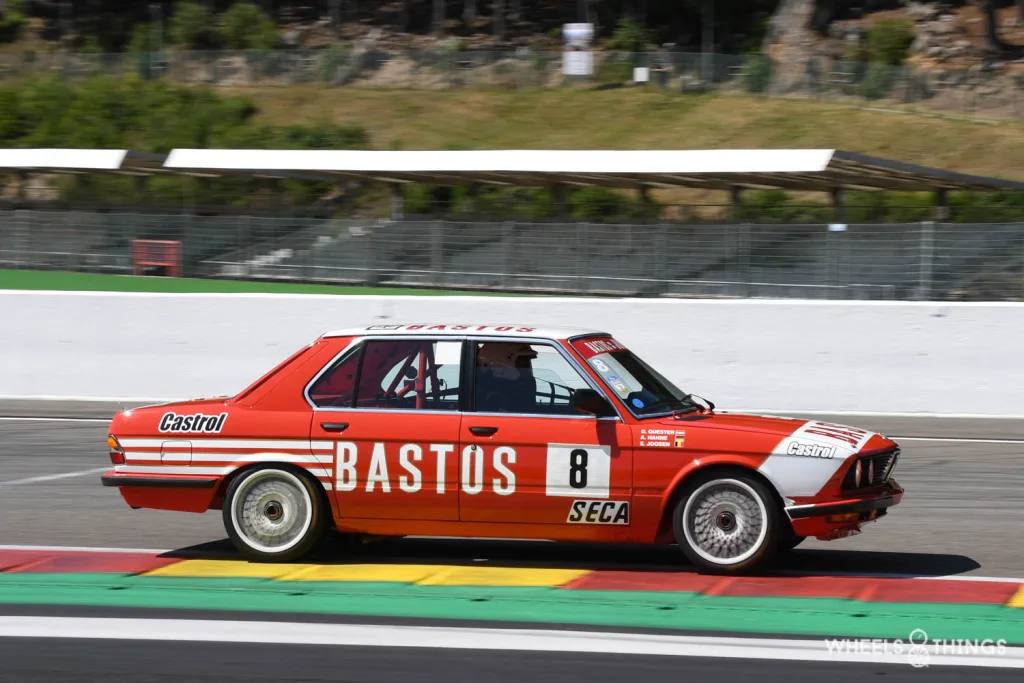
In the end, WM’s mechanics decide to dismantle the RTBF camera. While they do this, team chief Peeters gives a live interview on TV in which he says that it seems impossible to him that a TV camera would come to interfere with the electronics of his car but what turns out: after the dismantling, the hiccups have disappeared and the BMW seems to be reborn. Jarier and Tassin turn bang times to make up for lost time. They pass the Eggenberger BMW again but victory is no longer attainable. The Juma BMW has a bit too much of a lead and Joosen/Heyer and Hahne win the 1982 24 Hours edition with the “backup” BMW. For Eddie Joosen, a moment of redemption after four consecutive second places. Jarier/Tassin and Trintignant finish another fine second with three laps behind. A lap later follows the Eggenberger BMW of European champions Kelleners and Grano. The next three places are also for identical BMW 528i models. A great result for the 5 series.
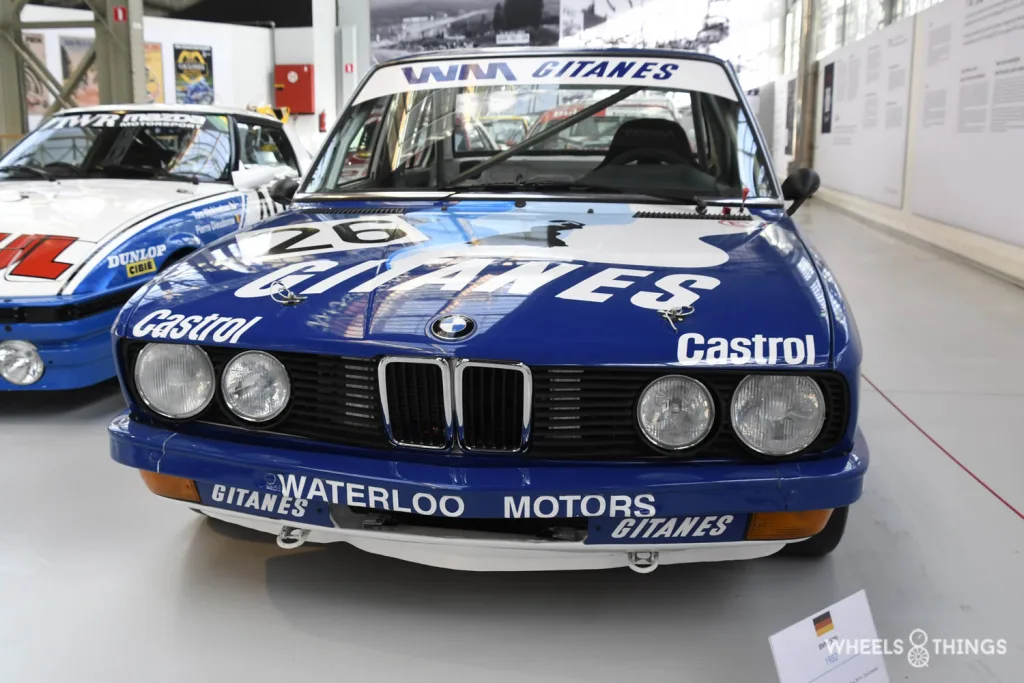
The beautiful dark blue Gitanes BMW achieves a nice final result. Had it not been for the problem with the TV camera, a first place would certainly have been possible. They only had to lose out to an identical, perfectly prepared Juma BMW driven by three top drivers on which the Juma team did a perfect and fast job at every pit stop. Had the TV camera not been there, there would certainly have been a fierce battle for first place. Too bad it turned out differently.
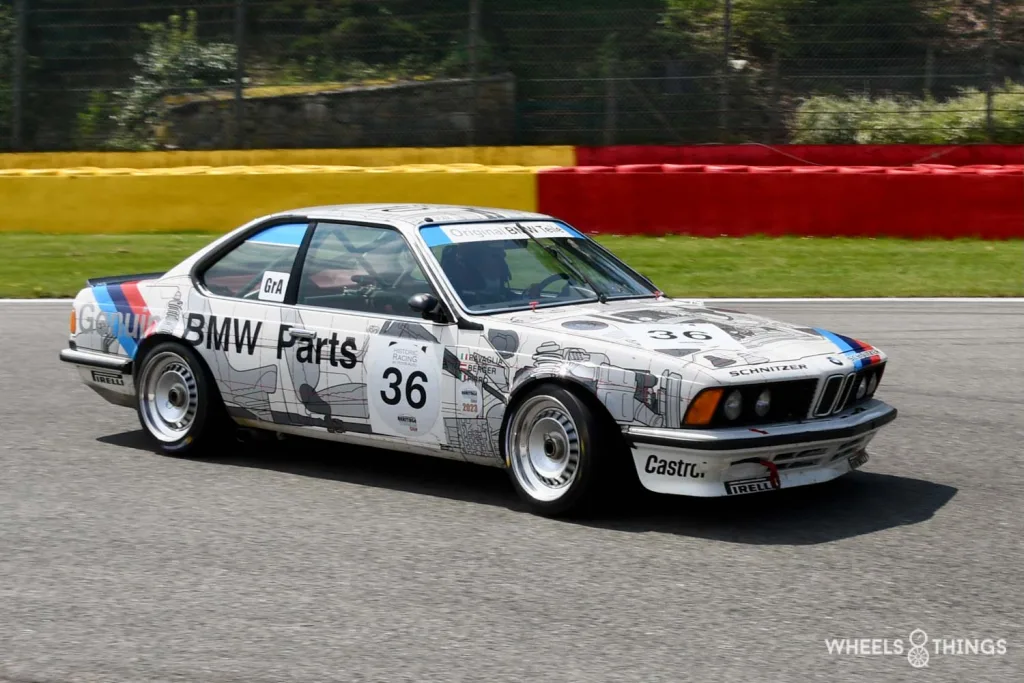
The BMW 528i will remain in use with the top teams for only one year. The arrival of the TWR Jaguar forces BMW Motorsport to throw a faster weapon into the fray. The 535i is not in the catalogue at that time and the choice is made to replace the 528i with the 635Csi. And that things are serious for BMW will soon become clear. The Schnitzer team will function as an official BMW team from 1983. The 635Csi will win two European titles and the 24 Hours of Francorchamps three times. Once with the Bastos Juma team in 1983 and twice with the Schnitzer team in 1985 and 1986. The 528i’s end up with smaller private teams and participate in the 24 Hours of Francorchamps a few more times in anonymity. So did the WM Gitanes car of Jarier/Tassin and Trintignant. In the meantime, it has been put back in then and completely restored. The car was for sale during the expo and has since been sold and we hope to meet it again soon on the Francorchamps circuit where, in 1982, it almost ran with the greatest honour. Kelleners and Grano’s Eggenberger BMW was also recently located again and it has since been subjected to a full restoration in the Netherlands. Still nice when the heroes of yesteryear are put back in their full glory of yesteryear. And with the prospects of the centenary of the 24 Hours of Francorchamps in 2024, we hope to welcome back some of them.
Foto’s : Joris De Cock en BMW AG
